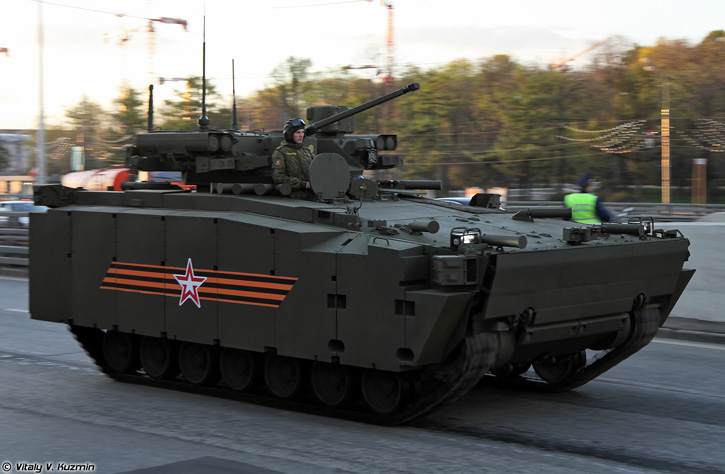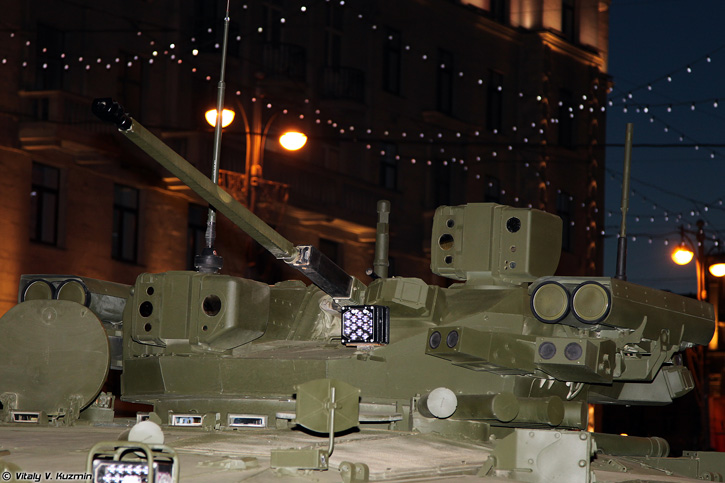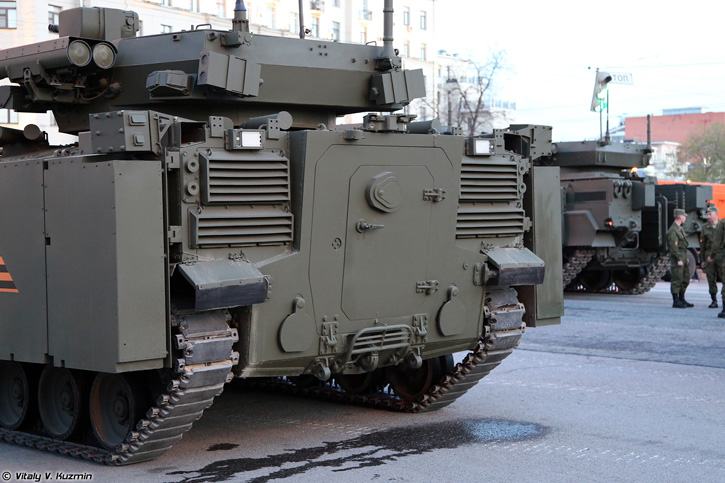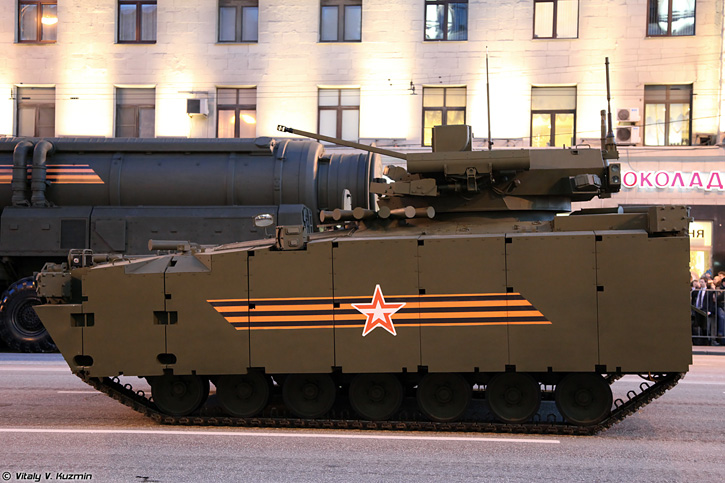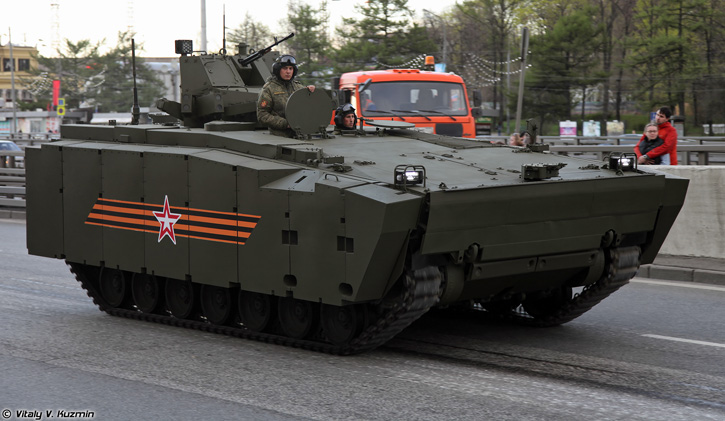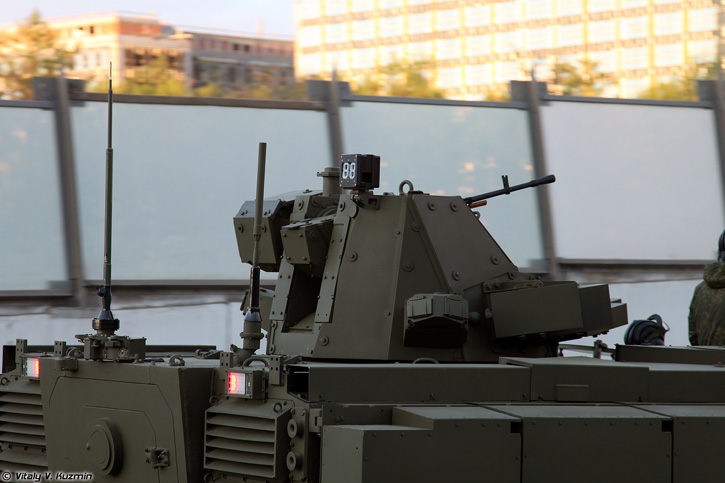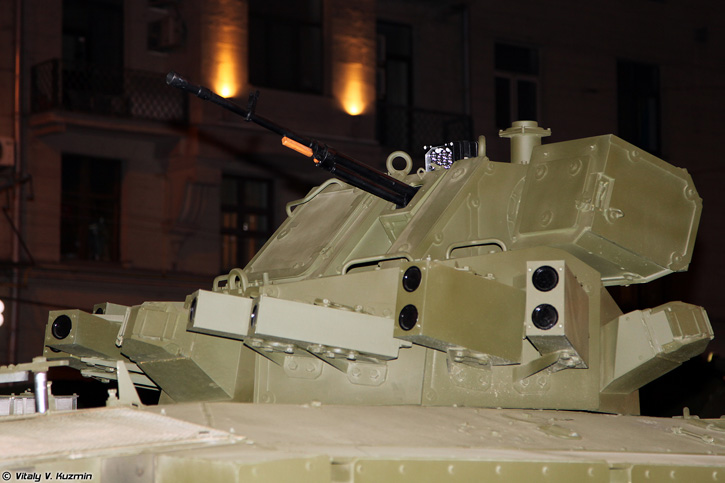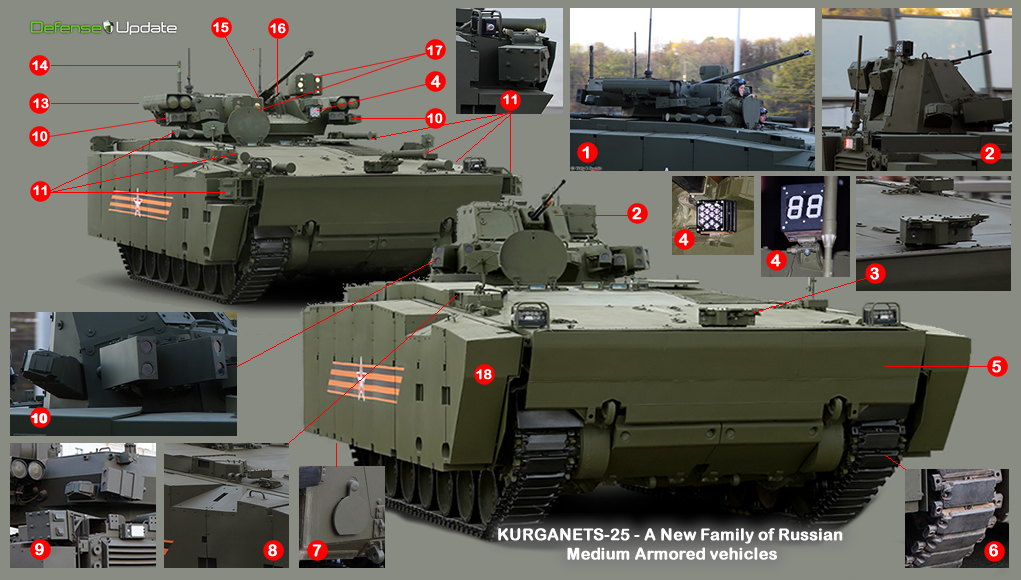
Kurganets-25 family of armored combat vehicles includes two members of a new family of medium- armored vehicles designed to replace the BMP-2 and MT-LB platforms in mechanized formations of the Russian army. Like their predecessors, the new vehicles have amphibious capability, enabling uninterrupted mobility across rivers. The Kurganets is manufactured by Kurganmashzavod, the plant that produced the previous generations of BMP-1, BMP-2 and BMP-3 vehicles.
The new platform is significantly heavier and larger than its predecessors, primarily due to the increased level of protection it offers. The Russians have displayed two variants of the Kurganets – the armored infantry fighting vehicle (Object 695) and the armored personnel carrier (Object 693). The Kurganets-25 infantry fighting vehicle is currently undergoing trials in the Russian army, and mass production is expected to start in 2016. Following is an overview of the different elements visible on the vehicles shown in the May 9th parade in Moscow.
Both vehicles share the same hull, suspension and drive train powered by a 800 hp diesel engine, enabling mobility, as stated, both on land and in water. Their steel tracks are fitted with rubber pads (6), designed to reduce ground pressure and damage to roads, while retaining the capability of travelling at high speeds. Both can reach speeds of up to 80 km/h on land, and 10 km/h in water. When travelling in water the vehicle deploys its wave breaker (5) and water jets (7) for forward movement and steering.
The main difference between the two variants is the turret and active protection systems used. The thick armor covering (18) seen on both sides of the vehicle is designed to provide armor protection while retaining the floating capability necessary to enable the amphibious operation.
[nonmember]Due to the wide interest in the new Russian armored vehicles we are opening our analysis to all readers. This kind of analysis is regularly provided to subscribers on regular basis. You are invited to join our Gold membership today.[/nonmember]
The Kurganets-25 infantry fighting vehicle is equipped with the KBP EPOCH turret (1), introduced as standard in all recent AFVs, such as the Armata T-15, Boomerang and Kurganets-25. This unmanned turret carries the 2A42 30mm cannon (15) with 500 rounds, a PKT 7.62 mm coaxial machine gun (16), four Kornet-EM guided missiles (two on each side – 13), two electro-optical target acquisition and missile guidance systems (17), and a meteorological mast (14). Also an array of sensors (9) and counter-measures, part of the vehicle’s active protection system ‘soft kill’ elements (10).
The hull also mounts 16 large tubes and four sensors (11) associated with the Afghanit ‘hard kill’ active protection system. A LED spotlight (4) located at the turret’s front end could also be part of the APS, acting as a decoy against 2nd-generation anti-tank guided missiles (ATGM).
The Kurganets-25 is equipped with several cameras, covering a full 360 degrees (3). Some of these cameras are stacked to cover wide fields of view. Others are tucked into the armor. For example, the side-looking cameras required special adaptation of the armor to clear their fields of view (8).
Unlike Russia’s previous armored personnel carriers, the Kurganets-25 lacks firing ports or personal hatches which would enable the infantry team to fight from within the vehicle. Part of the reasons for that could be the APS that fires automatically against incoming threats, creating flash and blast that could incapacitate exposed personnel nearby. Similar installations used on Israeli Merkava Mk4 tanks were equipped with blast deflectors, protecting the tank commander that could be exposed in his cupola.
Both variants are operated by crews of three. The infantry fighting vehicle is designed to carry six infantrymen. The armored personnel carrier (APC) variant can carry eight.
The APC carries a smaller remotely-operated turret (2), mounting a single 12.7 mm heavy machine gun. The vehicle retains the same active protection system ‘ring’ used on the BMP, but does not include the heavier Afghanit the BMP uses. Instead, it’s infra-red spotlight (4) is mounted at a higher level, and can serve both as a forward looking counter-measure and a signalling element, displaying numerical symbols backward, thus enabling communications with the infantry squad or other vehicles without relying on radio communications (similar to using flags). If coupled to the laser warning system on the vehicle, such a device could act as an unaided ‘blue force identification’ mechanism, responding to laser signals with a coded message. It would probably operate in visible and thermal bands, enabling both day and night operation.
